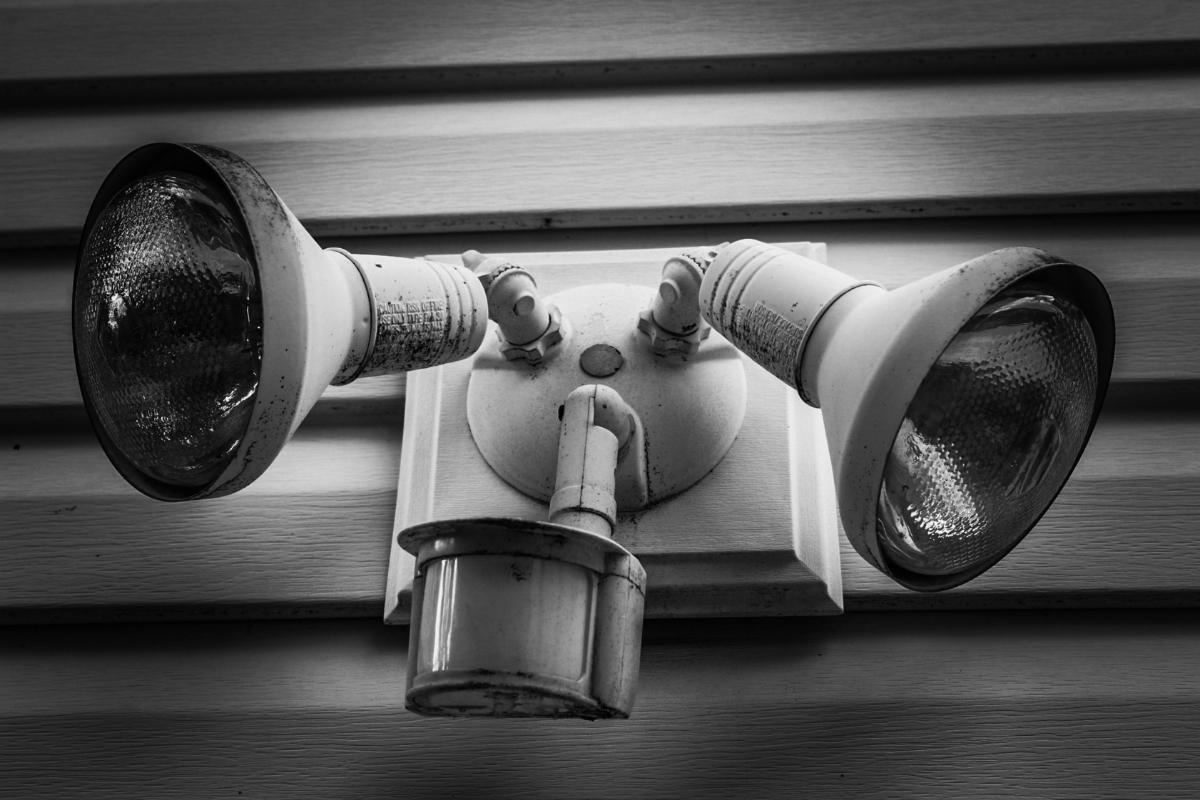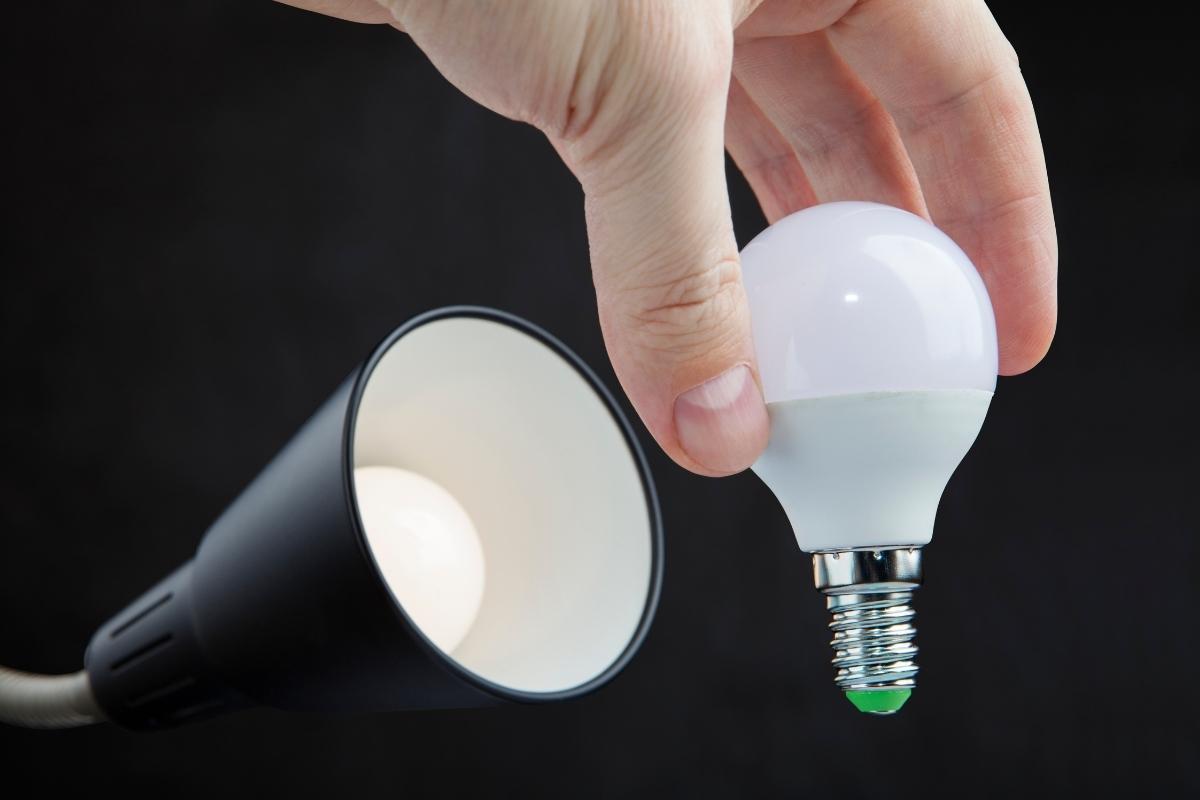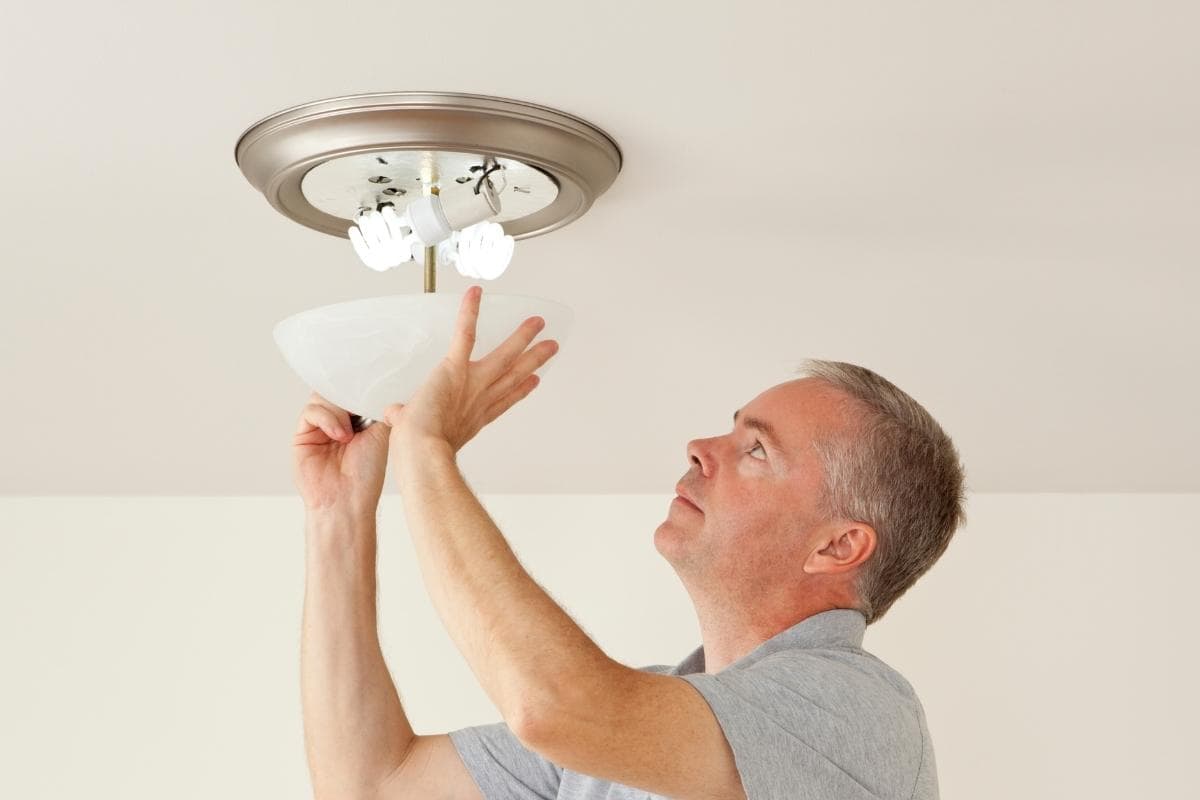One common issue people are facing when using motion sensor lights is that the light might start to flicker or repeatedly flash on and off out of a sudden, which makes the light completely unusable. It can be frustrating, sometimes annoyed, when there is no switch to turn the motion-activated light off independently. The faulty lights would keep on flashing during the whole day unless we unplug the light fixture. Flickering light might potentially trigger seizures in the long run that eventually damage our health.
Fortunately, the flickering and flashing problems are rare to see, and most of the issues can be easy to fix in no time. In this post, we’ll walk you through the causes of why a motion sensor light starts to flash or flicker and how to fix these problems.
Light Is Flickering or Blinking
Flickering or blinking is a momentary flash of light, usually unsteady and varies rapidly in brightness. Generally, when a motion sensor light is flickering, it has nothing to do with the motion sensor. When a light flickers, most of the time there is something wrong with the light fixture, light bulbs, or a loose connection.
Loose Wiring & Connection
A loose light bulb is a common cause that will result in light flickering. Without proper contact between the light bulb and socket, the bulb cannot get a consistent power supply from the source. The loose connection between the light bulb and the socket is the easiest to fix by simply tightening the light bulb.
Turn off the power to the faulty light, wait for the light bulb to cool down, and better use a glove to protect your hand from heat and then tighten the light bulb.
Besides that, the loose wiring in your house might trigger light flickering as well. Old breakers, bad wall switches, and loose wirings can all trigger a flickering light, and they are one of the major causes of house fires that you should not neglect.
If you don’t know how to locate the loose wiring in your house, call an electrician to fully examine your house.
Faulty Light Bulb, Fixture, or Circuit
This might be the most straightforward reason that pops up in people’s minds when they see a light flickering: something is bad. The bulb, light fixture, and electric circuit might go all bad and get faulty after a long time of normal usage.
Well, there is no easy way to tell which causes the light to blink. Start with replacing a new bulb to see if it can fix the blinking. If the problem exists, you might want to try replacing the entire light fixture with any working light fixture to see if the new light still blinks. If the problem still occurs with a new light, you call a pro electrician to check the circuit for possible causes.
Voltage Fluctuations
Voltage fluctuations can cause a flickering LED light. The spike and drop in voltage will instantly cause the LED light to brighten and dim due to how LED light works.
LED lights do not use a filament for illumination. Instead, they use an electronic driver to produce lighting, which means the voltage fluctuations will instantly result in different brightness output of LED lights. Whereas incandescent light bulbs illuminate by heating up the filament to produce light, so the voltage fluctuations will not instantly result in a light flickering for incandescent bulbs.
If you’re running multiple appliances at once, LED lights might flicker whenever you turn an electric appliance on or off, which will cause the voltage to spike.
When the voltage fluctuation is the main reason that causes your LED motion sensor light to flicker, you can try replacing it with another non-LED light bulb. This is not an optimal solution, but it solves the problem.
Dimming switches
Typically, we don’t use dimmer switches along with motion sensor lights. But if you do, old dimmer switches are designed for incandescent light bulbs and do not work well with LED lights which might cause a flickering.
If your dimmer switch is aged, it might possibly be the reason why your light is flickering. You can upgrade your dimmer switches with a new one and solve the flickering problem. New dimmer switches should work well with LED lights.
Light Is Turning On and Off Repeatedly
Flashing is a sudden, short, temporary burst of light to briefly illuminate a scene, which is often used to describe a motion sensor light turning on and off repeatedly. Unlike flickering, when a motion sensor light is flashing, the light fixture itself is mostly well functioning.
The reason a motion sensor light starts to flash is that the motion sensor is only able to detect motion intermittently, thus causing the light to turn off and back on repeatedly. This issue is often due to improper configuration of the motion sensor that leads to frequent triggering, which can be easily fixed with proper adjustment to the light.
Before solving the problem, a quick workaround is to set the sensitivity to high and maximum time delay such as 30 minutes. This does not solve the problem, but it can help us rule out the possibility of light flickering or a damaged motion sensor first. If the flickering problem disappears, we can focus on adjusting the motion sensor’s settings. It can also be a temporary quick “fix” to stop the light from turning off over and over.
Test Mode
Nearly all outdoor motion sensor lights provide a test mode for users to adjust the settings after initial installation. In test mode, the light will quickly turn off after being activated, so users don’t have to wait a long time for the light to turn off before testing other configurations and locations. We should enter test mode first before we adjust other settings.
Users can enter test mode by selecting the “test” or “test mode” in the timer settings on the back of the motion sensor. The test mode is similar to a very short time delay for like 5 to 10 seconds for testing purposes.
For some motion sensor light models that do not have a test mode, such as indoor motion sensor lights, you can select the minimum timer setting for like 30 seconds to make the light turn off as soon as possible once it’s activated.
Test mode could also be one of the reasons why the motion light is turning on and off repeatedly due to the short time setting. People might forget to exit test mode after initial testing.
On Time Duration
The on-time, time duration, or time delay setting controls how long the motion sensor light will stay on after it’s triggered by a moving object. When the motion sensor light turns off too soon, a short on-time setting might be the most direct reason.
If you set a very short time delay like 10 seconds on your motion sensor lights, your lights might turn off very quickly as soon as it cannot detect motion after 10 seconds. A short on-time duration will obviously cause your light to turn off frequently. Selecting a medium time setting like 10 minutes can easily solve the problem for good.
Sensitivity Setting
The sensitivity of a motion sensor light can affect how far and sensitive the motion detector can detect motion signals.
When the sensor sensitivity is too high, the motion sensor might capture motion signals outside the detection area, or the light might get triggered by small moving objects. Even when there are no people in the area, the motion sensor might still detect non-human motion signals and get activated. If your motion sensor lights frequently turn on, you should set a low sensitivity to reduce the false on.
When the sensitivity is too low, the motion sensor light might fail to detect the ongoing motion signals in the sensor zone effectively. Therefore, the motion sensor light might turn off, thinking the area is empty while the place is still occupied by people. If your motion sensor lights frequently turn off, you should set a high sensitivity to reduce the false off.
Sensor Position
In fact, the motion sensor’s position is crucial to having a precise motion-detecting result, but many people usually do not pay enough attention to adjusting it after installation. Without proper adjustment, the motion sensor light could either turn on too often or turn off too soon.
Here are some tips for helping you to optimize and reposition your sensor for the best performance.
Away From Heat Sources
PIR motion sensor lights are sensitive to thermal signals and heat changes because PIR motion sensors detect the infrared signals emitted from warm, moving bodies. Any difference in temperature may trigger a PIR motion sensor to turn on the light.
When installing motion-activated lights with a PIR motion sensor, users should place the light away from heat sources such as air conditioners or near the window where the hot wind from the outside window may be considered as a heat change.
If it’s not possible to relocate the light from nearby heat sources after installation, at least turn the motion sensor to another direction to face away from potential heat sources.
Point to the Detection Area
When adjusting and repositioning the motion sensor, one golden rule is to make sure the motion sensor is only able to cover the area where you want it to scan. If not, any moving object outside the area can also trigger the light to turn on, such as wild animals or moving cars, which seems like your motion sensor light suddenly turns on for no reason.
Another thing to notice is that PIR motion sensor lights are better for detecting motion across the sensor rather than motion towards the sensor. When people walk towards or away from the sensor, PIR sensors might have difficulty detecting the movement. So it’s important to place the light on the right places for the best performance.
Restrict the Detection Range
Sometimes when repositioning a motion sensor is not enough to limit its detection range, we can narrow its detection angle to further restrict it. A motion sensor can have a large detecting angle from 180 degrees up to 360 degrees point of view depending on how and where it’s installed.
Similar to adjusting a motion sensor light switch, you can use adhesive tapes to partially blind the motion sensor’s lens to narrow its detection angle. The tapes act as a blinder that covers the motion sensor to prevent it from receiving infrared signals from certain directions, further forcing the motion sensor to scan a restricted, smaller area.
Clean the Sensor
One thing that people usually forget is to regularly clean the motion sensor, especially when it’s an outdoor security light. Dusks, dirt, and spider webs may sometimes cover the motion sensor, subsequently reducing its ability to detect motion. Similarly, a medium-sized spider is big enough to trigger the PIR motion sensor to activate the light when it crawls near or across the motion sensor.
Whether your lights are frequently turning on or turning off, it’s always hugely beneficial to keep your motion sensor light clean and remove all obstructions around the lens for accuracy in detection.
Conclusion
Congrats on successfully fixing the issue and bringing your motion sensor light back to normal. Remember to exit the test mode and select proper timer settings that best suit your daily routine.
If the problem still exists, it’s probably because the electronic component has run into some errors. You can reset the motion sensor light back to default and give it another try.
If a reset cannot fix the issue, the electronics in your light are probably permanently damaged. We recommend buying a new motion sensor light and replacing the old one, and it might be more cost-friendly than calling a professional to fix that light after you have already tried the methods above.









